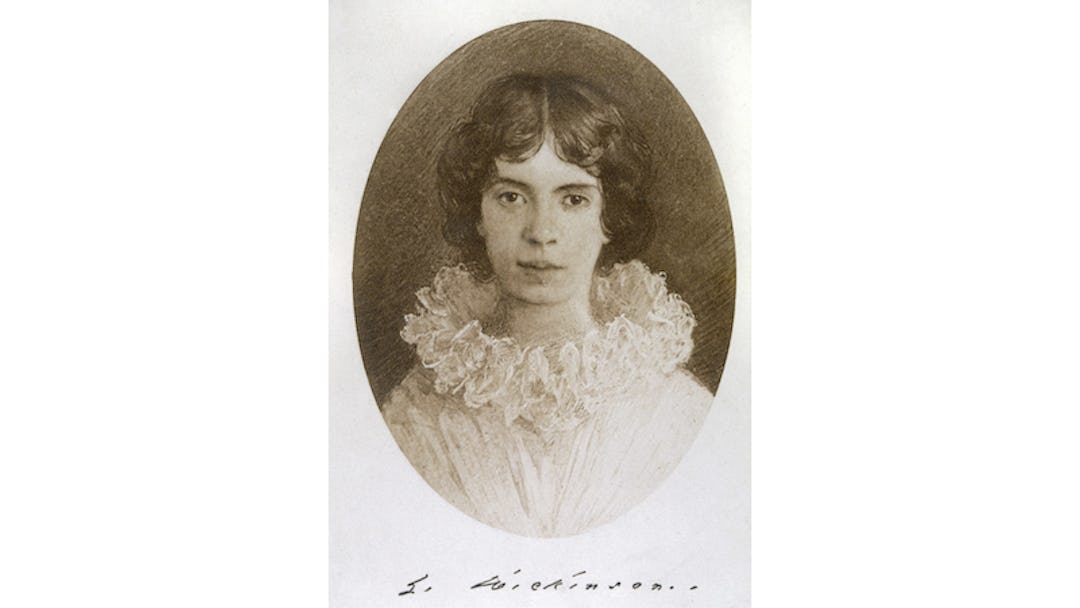Emily Dickinson is probably literature’s most notorious shut-in — after all, the woman didn’t leave her family compound for a full 20 years — so we’re always fascinated by the details of her strange and (we imagine) lonely life. Recently, we came across this collection of family artifacts from the Dickinson family estate, curated by Harvard University, and we’ve been poring over them ever since. Something about the fact that she never left the house lends her personal things a more meaningful tone — she spent every day surrounded by these things, and her experiences were so limited that we find ourselves looking for answers in every teacup. Click through to see a few of the most interesting objects from the Harvard College Library’s collection.
Photo Credit: Dickinson Family Artifacts (Dickinson Room). Houghton Library, Harvard University.
Bowfront chest of drawers, kept in Emily Dickinson’s bedchamber. After Emily’s death, her sister Lavinia discovered hundreds of her poems in the bottom drawer.
Photo Credit: Dickinson Family Artifacts (Dickinson Room). Houghton Library, Harvard University.
The writing stand that Emily Dickinson used as a desk in her bedroom. No wonder her poems were so short.
Photo Credit: Dickinson Family Artifacts (Dickinson Room). Houghton Library, Harvard University.
Teapot; white with gilt striping. From Dickinson’s mother’s collection, probably purchased in preparation for marriage. Most likely part of the family’s best tea set, so only to be used when Dickinson was hiding in her room, trying to avoid seeing company.
Photo Credit: Dickinson Family Artifacts (Dickinson Room). Houghton Library, Harvard University.
The Dickinson family sugar bowl, ostensibly raided by Emily every time she made her famous coconut cake.
Photo Credit: Dickinson Family Artifacts (Dickinson Room). Houghton Library, Harvard University.
Sand glass, likely given to Dickinson as a thoughtful gift, and used to inspire many poems about the passage of time and the thudding inevitability of death. “And this brief Drama in the flesh — / Is shifted — like a Sand –” etc.
Photo Credit: Dickinson Family Artifacts (Dickinson Room). Houghton Library, Harvard University.
Swinging seal, used for sealing letters or documents, with “Emily” engraved in script. After all, letters are a shut-in’s best friend, so might as well make them fancy.
Photo Credit: Dickinson Family Artifacts (Dickinson Room). Houghton Library, Harvard University.
Pianoforte; Renaissance revival square piano. Given to a fourteen-year-old Emily by her father in 1845. Just imagine if she had turned out to be a singer/songwriter instead of a poet.
Photo Credit: Dickinson Family Artifacts (Dickinson Room). Houghton Library, Harvard University.
Adjustable woven bracelet with copper clasp and ornament, “Little Phil” engraved on underside of copper clasp. “Little Phil” is Judge Otis P. Lord, one of Emily’s father’s friends, with whom she had a romance after the death of his wife. With this gift, he ensured she would always keep his name close to her, er, wrist.
Photo Credit: Dickinson Family Artifacts (Dickinson Room). Houghton Library, Harvard University.
Dickinson’s mother’s locket, which contained the braided together hair of her parents. Seems like intense devotion ran in the family.
Photo Credit: Dickinson Family Artifacts (Dickinson Room). Houghton Library, Harvard University.
Dickinson’s brooch, faceted garnets surrounded by pearls; engraved initials on the back “E.D.” For dressing up to go downstairs.
